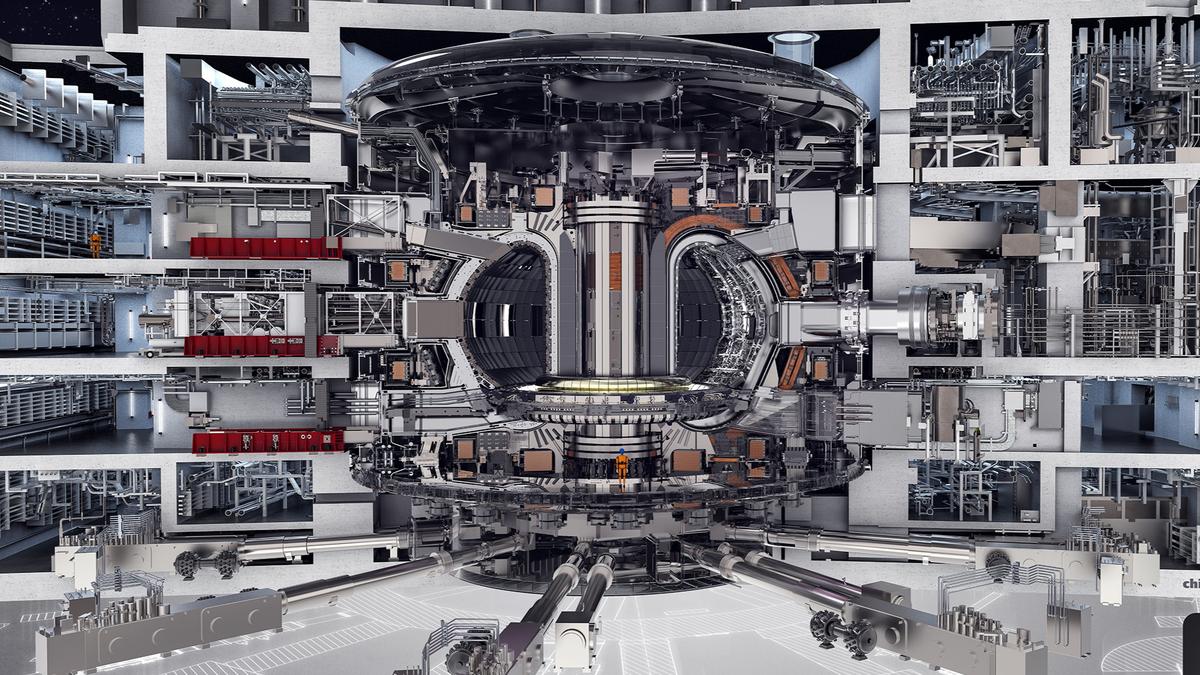
China’s EAST reactor keeps the fire of magnetic fusion burning Premium
The Hindu
Chinese scientists sustain plasma at 100 million degrees C for 1,066 seconds in EAST, advancing nuclear fusion research.
On January 20, Chinese scientists reported that they were able to maintain a plasma at a temperature of 100 million degrees C for about 1,066 seconds in a nuclear fusion reactor called the Experimental Advanced Superconducting Tokamak (EAST).
In 1938, physicists Otto Hahn and Fritz Strassmann found that energy is produced when the nucleus of an atom breaks apart, a process that Lise Meitner and Otto Frisch explained a year later as a process called ‘fission’. Only four years later, physicists used this principle to build and operate the world’s first reactor with a sustainable nuclear fission reaction.
By this time physicists also knew that energy is also produced when two atomic nuclei fuse together, a process called fusion. Nuclear fission produces harmful radioactive waste whereas nuclear fusion doesn’t. This is why developing a nuclear fusion reactor has become an important technological goal for a world keenly interested in new sources of clean energy.
The problem is the amount of energy required to start and sustain a fusion reaction. A nuclear fission reaction can be kicked off by shooting neutrons of suitable energy at the atoms of unstable nuclei like uranium. For fusion to occur, however, the nuclei need to be exposed to a temperature of at least 100 million degrees C.
The lightest nucleus in nature is of hydrogen, consisting of a single proton. An isotope of hydrogen called deuterium has one proton and one neutron in its nucleus. The nucleus of another isotope called tritium has one proton and two neutrons. Deuterium-deuterium fusion requires a higher temperature to begin than deuterium-tritium fusion. This is because the extra neutron in the tritium nucleus helps overcome the repulsion of like-charges between the protons.
The fusion of a deuterium and a tritium nucleus creates a non-radioactive helium-4 nucleus, a neutron, and 17.6 MeV of energy, which is significant. The neutron can be directed to a blanket of materials surrounding the reactor that capture it and release more heat.
While deuterium is abundant in seawater, there are no natural deposits of tritium and it is very hard to produce. At present it is mostly created as a by-product in heavy-water fission reactors in Canada, India, and South Korea.













